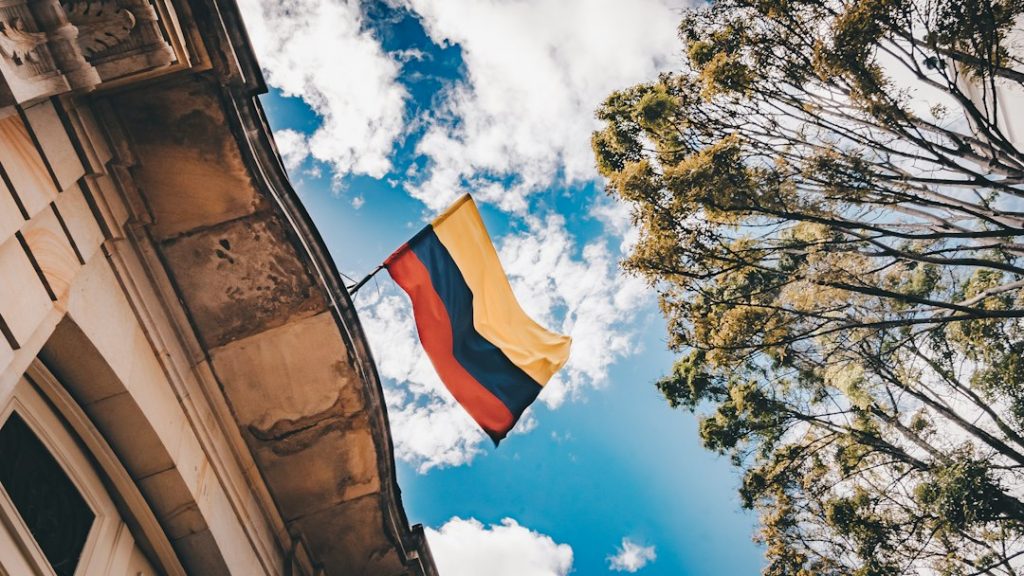Political boundaries are the lines that separate different territories or regions within a country. These boundaries play a crucial role in governance as they define the jurisdiction and authority of different administrative units. In Colombia, political boundaries are essential for the effective functioning of the government and the distribution of power and resources.
Summary
- Colombia is divided into administrative divisions known as provinces and districts.
- There are 32 provinces in Colombia, each with its own governor and assembly.
- The districts of Colombia are Bogotá, Cartagena, and Santa Marta, each with its own mayor and council.
- Colombia’s historical boundaries have been shaped by colonialism, wars, and territorial disputes.
- Political boundaries in Colombia have a significant impact on governance, economy, and society.
Overview of Colombia’s Administrative Divisions
Colombia has a three-tiered administrative system consisting of departments, municipalities, and localities. The departments are the highest level of administrative division and there are 32 departments in total. Each department is further divided into municipalities, which are the second level of administrative division. Finally, municipalities are divided into localities, which are the smallest administrative units.
The roles and responsibilities of each level vary. Departments have their own governor and administrative bodies responsible for overseeing public services, infrastructure development, and economic planning within their jurisdiction. Municipalities have mayors and local councils that handle local governance, including education, healthcare, and public safety. Localities, on the other hand, have local administrators who focus on community-level issues such as sanitation, transportation, and public spaces.
Understanding the Provinces of Colombia
Colombia’s provinces are an important part of its administrative divisions. There are 32 provinces in total, each with its own unique history and significance. The provinces were originally established during the Spanish colonial period and have since evolved to become important political and cultural entities within Colombia.
The provinces play a crucial role in governance as they serve as intermediaries between the national government and the local municipalities. They help coordinate policies and programs at the regional level, ensuring that resources are distributed equitably and efficiently. Additionally, provinces often have their own cultural identities and traditions, contributing to Colombia’s rich diversity.
The Districts of Colombia: An Overview
In addition to the provinces, Colombia also has a capital district known as Bogotá, which is the seat of the national government. The capital district is further divided into localities, similar to municipalities in other parts of the country. These localities have their own local administrators and are responsible for providing services and maintaining infrastructure within their jurisdiction.
The capital district plays a unique role in Colombia’s governance as it is home to the national government, including the president, congress, and various ministries. It serves as the political and administrative center of the country, making decisions that impact the entire nation. The localities within the capital district also have their own responsibilities, such as managing public transportation, maintaining parks and public spaces, and ensuring public safety.
Historical Boundaries of Colombia: A Brief History
Colombia’s political boundaries have evolved over time due to various historical events and geopolitical factors. The country’s current borders were established in the early 19th century after gaining independence from Spain. However, throughout its history, Colombia has experienced territorial disputes with neighboring countries, resulting in border changes and adjustments.
One significant event in Colombia’s history that impacted its boundaries was the separation of Panama in 1903. Panama was originally part of Colombia but declared independence with the support of the United States. This led to a change in Colombia’s borders and the creation of a new country.
How Political Boundaries Affect Governance in Colombia
Political boundaries have a significant impact on governance in Colombia. They determine the distribution of power and resources between different administrative units, which can affect the delivery of public services and economic development. The decentralization of power through administrative divisions allows for more localized decision-making and responsiveness to local needs.
However, political boundaries can also present challenges for governance. Disparities in resources and development between different regions can lead to inequality and social unrest. Additionally, coordinating policies and programs across different administrative units can be complex and time-consuming.
The Role of Provinces and Districts in Colombia’s Economy
Colombia’s provinces and districts play a crucial role in the country’s economy. Each province has its own unique economic strengths and resources, contributing to the overall national economy. For example, some provinces are known for their agricultural production, while others have a strong manufacturing or mining sector.
The capital district, Bogotá, is the economic hub of the country. It is home to numerous national and international businesses, financial institutions, and government agencies. The localities within the capital district also contribute to the economy through various industries and services.
Challenges in Maintaining Political Boundaries in Colombia
Maintaining political boundaries in Colombia can be challenging due to various factors. One challenge is the presence of illegal armed groups and drug cartels in certain regions, which can disrupt governance and undermine the authority of local governments. These groups often control territory and resources, making it difficult for the government to exercise control.
Another challenge is the geographical diversity of Colombia, which includes mountainous terrain, dense rainforests, and remote rural areas. This makes it challenging to provide public services and infrastructure to all parts of the country, particularly in isolated regions.
The Impact of Political Boundaries on Colombia’s Society
Political boundaries in Colombia can have a significant impact on society, particularly on marginalized communities and minority groups. In some cases, certain regions may face discrimination or neglect from the central government, leading to social and economic disparities. This can result in social unrest and conflict.
On the other hand, political boundaries can also contribute to cultural diversity and identity. Different provinces and districts often have their own unique traditions, languages, and customs. This diversity adds richness to Colombia’s society and contributes to its national identity.
Future Prospects for Political Boundaries in Colombia
The future prospects for political boundaries in Colombia are uncertain. There have been discussions about potential changes to the administrative divisions, including proposals to create new provinces or reorganize existing ones. These changes could have significant implications for governance, economy, and society as a whole.
It is important for any potential changes to be carefully considered and implemented in a way that ensures equitable distribution of resources and representation for all regions. This will require dialogue and collaboration between different stakeholders, including the national government, local governments, and civil society organizations.
In conclusion, political boundaries play a crucial role in governance in Colombia. They define the jurisdiction and authority of different administrative units, ensuring the effective functioning of the government and the distribution of power and resources. The provinces and districts within Colombia’s administrative divisions have their own unique roles and responsibilities, contributing to the country’s economy and society. However, maintaining political boundaries can be challenging due to various factors, including the presence of illegal armed groups and geographical diversity. It is important to address these challenges and ensure that political boundaries are maintained in a way that promotes equality, inclusivity, and sustainable development.
FAQs
What are the political boundaries of Colombia?
Colombia is divided into 32 departments (provinces), one capital district (Bogotá), and one special district (Archipelago of San Andrés, Providencia, and Santa Catalina).
What is the difference between a department and a district in Colombia?
A department is a political subdivision of Colombia, similar to a province or state, while a district is a special administrative division that is usually smaller in size and has a unique status.
What is the capital district of Colombia?
The capital district of Colombia is Bogotá, which is also the capital city of the country.
What is the special district of Colombia?
The special district of Colombia is the Archipelago of San Andrés, Providencia, and Santa Catalina, which is a group of islands located in the Caribbean Sea.
What are historical boundaries in Colombia?
Historical boundaries in Colombia refer to the traditional regions of the country that have cultural and historical significance, but do not have any official political status. These regions include the Andean region, the Caribbean region, the Pacific region, the Orinoquia region, and the Amazon region.


